1. From savings to spending: Japan's households are cash rich
The pandemic era led to “forced savings” by Japanese consumers, amounting to an estimated Japanese yen (JPY) 50 trillion (USD 335 billion). This enormous savings pool is now set to fuel sustained economic growth as consumers begin to spend and invest more. The societal transition from a deflationary mindset to a mild inflationary one is key to unlocking this wealth. Historically, Japanese households have been underinvested in financial markets. While saving cash made sense in a deflationary economy, it is less rational amid mild reflation. Reflation incentivises equity investments to keep up with inflation and encourages behavioural change (increased spending) due to expected income growth. The new Nippon Individual Savings Account (NISA) regulations, effective in 2024, are timely. NISA’s tax incentives promote long-term savings in financial instruments and encourage market entry. They also support long-term investing, enabling dollar cost averaging and the benefits of compounding returns, often called “the eighth wonder of the world.”
Chart 1: Household Cash and Deposit (JPY trillion)
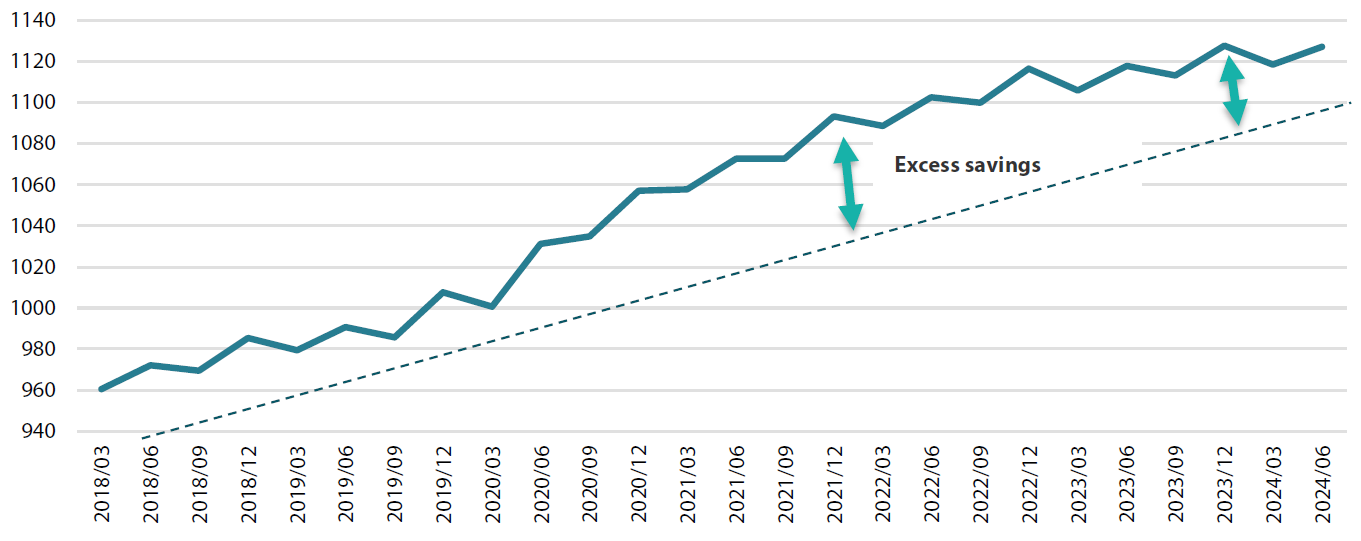
Source: Bank of Japan as of end-June 2024
2. Pent-up demand meets high wage growth
More importantly, the combination of pent-up demand from household savings and the highest wage hikes in decades, following the 2024 Shunto spring wage negotiations, is driving higher consumer spending in Japan. The 2024 Shunto negotiations marked a crucial milestone for the Japanese economy as confidence returned. These annual wage negotiations between labour unions and employers gained momentum and resulted in the highest wage increases in decades. Several measures the Japanese government implemented to drive wage growth this year included tax breaks and subsidies to invest in labour saving capital goods. This was not only a response to the rising cost of living but also a strategic measure to boost economic growth through enhanced consumer spending. Looking ahead to 2025, Japan’s largest labour union federation, Rengo, has recently announced its target wage hike of “5% or more” for next year, maintaining the same level as this year, indicating that healthy wage growth is likely to continue. Moreover, Rengo raised its target wage hike to 6% for SMEs in order to close their gap with large corporations. This is particularly important as approximately 70% of the employees work for SMEs in Japan.
Chart 2: Percentage wage increase in Spring Wage Offensive
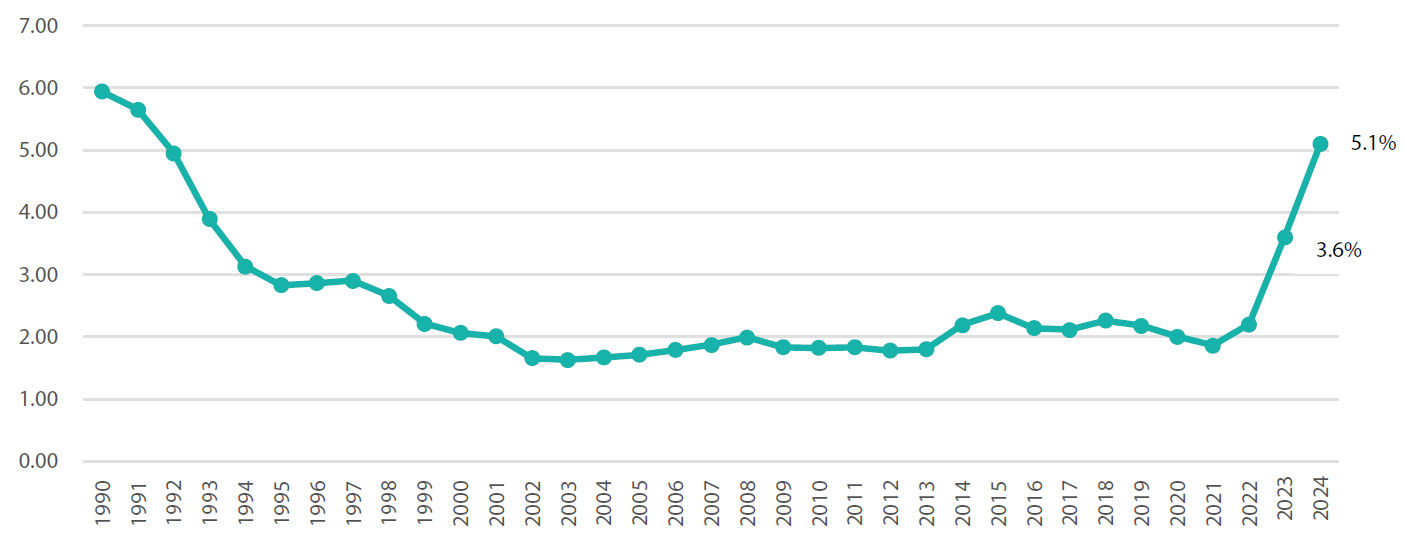
Source: Minister of Health, Labour and Welfare of Japan and Rengo (for 2024) as of July 3, 2024
3. Real household income (2+ people) has turned positive
Wage growth in tandem with lower inflation is driving widespread real income growth for households. Expectations of higher income is also likely to drive higher consumer confidence.
Chart 3: Real household income (2 + people)
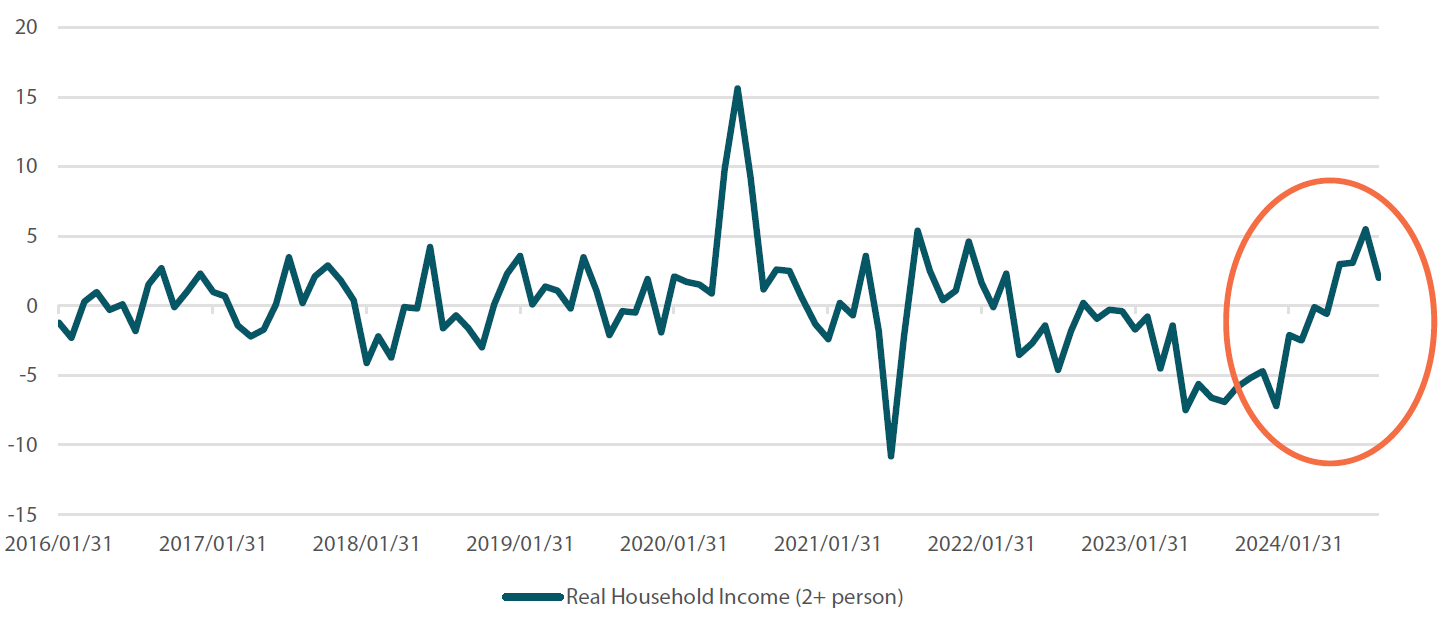
Source: Bloomberg as of end-August, 2024
4. Tourism megatrend a powerful and real growth driver
Japanese tourism saw a strong rebound in 2023, welcoming 25 million inbound tourists. This growth has gained momentum in 2024, with cumulative tourist numbers (as of 30 September, 2024) already surpassing the total for 2023, reaching 26.8 million inbound tourists according to the Japan National Tourism Organization. Ongoing yen weakness and the growing attraction of Japan by global tourists (ranked third on the World Economic Forum Travel & Tourism Index Ranking in 2024) is driving this secular megatrend. The Japanese government is now targeting to have 60 million visitors with JPY 15 trillion in spending by 2030. Inbound tourism spending is considered to have already outstripped major Japanese export categories including auto parts, steel products and semiconductor/electric components.
Chart 4: Inbound tourists spending compared to major Japanese exports (JPY trillions)
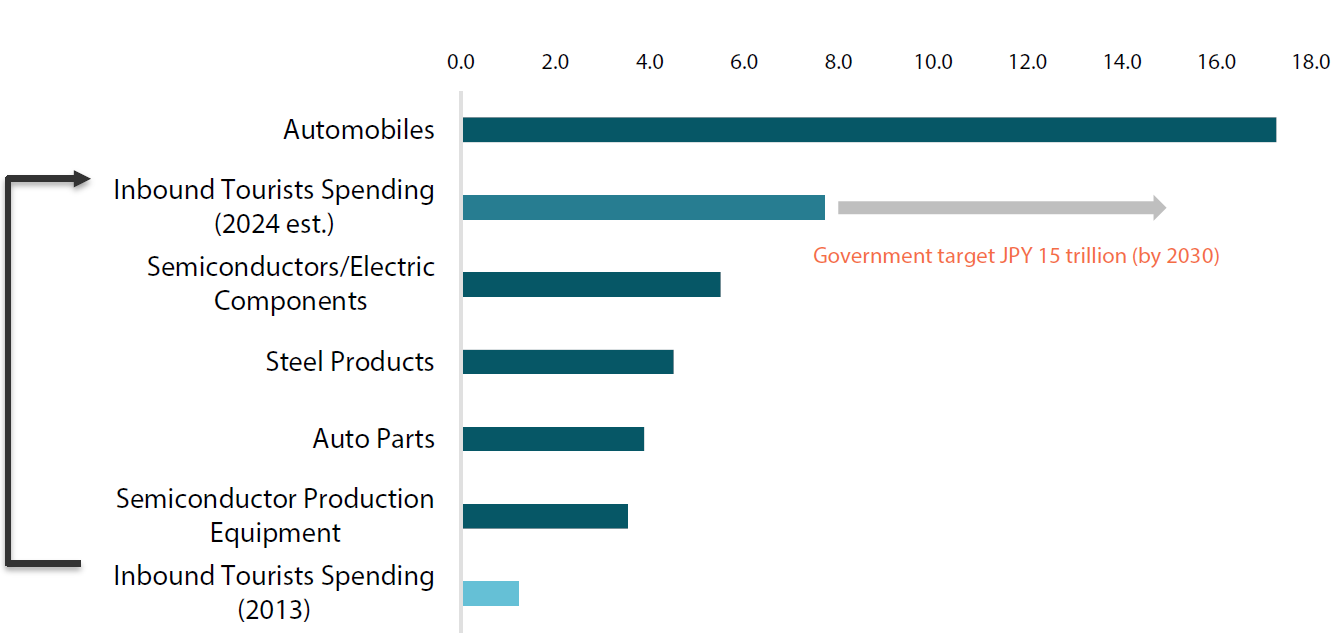
Source: Nikko AM based on data from Cabinet Office, Ministry of Land, Infrastructure, Transport and Tourism and Ministry of Finance Trade Statistics
5. Japan’s cash-rich companies are coming out of hibernation
The majority of companies in Japan are net-cash positive, in fact over the past two decades companies with net cash has nearly doubled. Japanese corporate profit margins have also been improving for decades on the back of revenue growth and cost cutting, while capital efficiency has flatlined. We expect this to be addressed in the coming years as companies focus on improving their return on equity to respond to the growing pressure by shareholders. Similar to consumers, the shift to mild inflation changes corporate incentives around hoarding cash in favour of putting it to more productive uses including increased shareholder returns.
Chart 5: Percentage net cash vs. percentage net debt companies in Japan
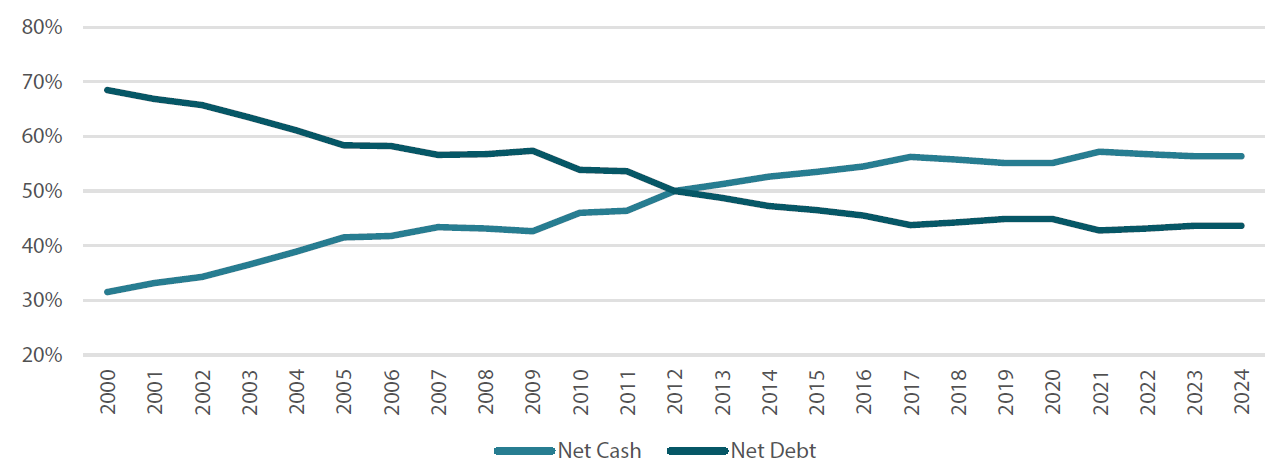
Source: Nikko AM based on Bloomberg data as of June 2024 (universe of the analysis is TOPIX excluding financial companies)
For more insightful charts about Japan, download the Nikko AM investment guide here.
Nikko AM team in Europe
Email: This email address is being protected from spambots. You need JavaScript enabled to view it.




